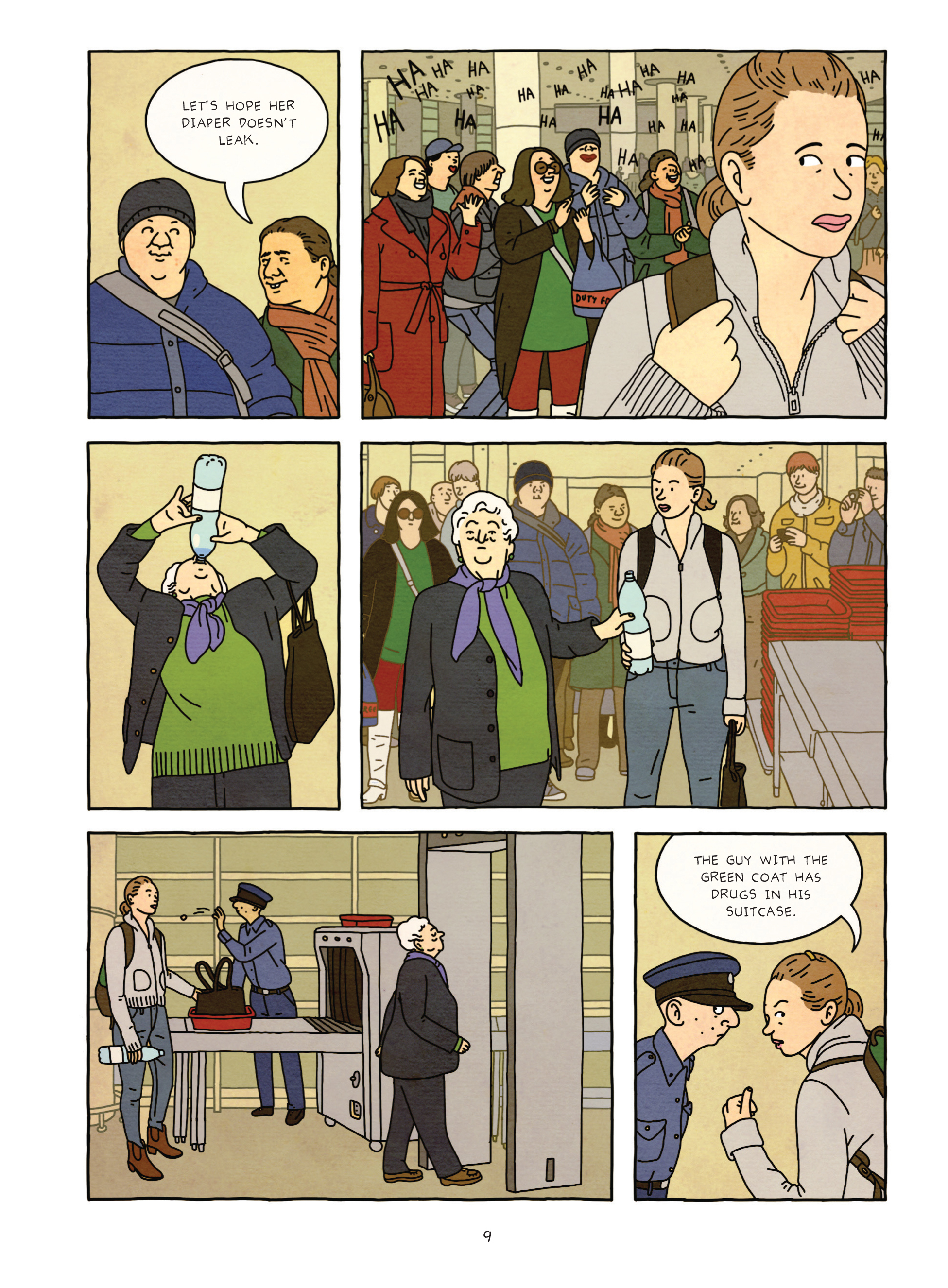“It’s going to be the Polish ‘Persepolis,” Tomasz claims of
the graphic novel about the Warsaw uprising. You can’t help but smile a little,
recognizing this as perhaps not Tomasz on his work in progress, but Rutu Modan
on The Property. The comparison feels
natural, but on closer inspection becomes more and more blurred; Marjane
Satrapi’s biographical Persepolis presents
us with a monochrome story of an adolescent girl from 1970s Iran, very
different to Rutu Modan’s 21st century Israeli protagonist Mica Segal,
draped in Modan’s colourful style, reminiscient of a mixture of Georges Remi
(or ‘Hergés’)’s The Adventures of Tin Tin
mixed with the pop art style of Julian Opie on the Blue: the Best of cover. Bodies, clothes and surroundings are kept
realistic, while faces are playful and sometimes exaggerated, especially noses.
One strong similarity between the two texts is the unflinching and all-telling
demonstration of a story of the Personal.
The story
follows Mica Segal and her grandmother, Regina, leave Ben-Gurion airport in
Israel (the date is kept ambiguous as “200X.)” The internal conflicts of the
region are not mentioned in the story; I have not read it, but Modan’s other
work, Exit Wounds seems to deal with
this more directly. The only real hint is when Mr. Popowski instigates a Krav
Maga block from Mica upon learning that she is from Israel. They are heading to
Regina’s native Poland, a country she left before WWII for Israel, to reclaim
‘the property’; a building that Regina’s parents owned before the war. Avram
Yogdavik, an overbearing ‘friend’ of Mica’s auntie Tzilla, tags along. Mica
meets Tomasz, a young Polish man giving tours of Jewish Warsaw while hiding
away from Yogdavik, while Regina reconnects with a secretive past in the city.
Right from
the start we are given personal and emotive hooks; the inside covers display
not an archetypal picture of Poland one might expect of the ‘Polish
Persepolis,’ but an illustration of forests, houses, lakes and mountains in
Sweden, complete with a little Swedish flag. Before reading the book this makes
no sense, but comes to make sense as this luscious image of Sweden represents a
deeply emotive point in Regina’s personal history. Even the epigraph has a
personal nature, being from a family member of Modan’s.
In the face
of texts dealing with post-war Polish-Jewish identity such as Art Spiegelman’s MAUS (the only other similarity being
Regina and Vladek’s shared stinginess of food,) we can see how difficult it is
to pen a story of the Personal, of love, loss, and family. While embarking to
locate the property, Mica suddenly witnesses a re-enactment of the Nazi’s
forcing Jews onto a truck, shocking Mica and Avram into disbelief, with Avram
almost forgetting that WWII is over and attacking one of the re-enacting Nazi
soldiers. The history of WWII, the holocaust and uprisings against the Nazis is
far from forgotten in the area, as Mica encounters tours, memorials, tourists
and those in the business time and time again. Even Mica, when dealing with a
melancholic Regina, brings up history as a cause before the Personal; “Is it
because of Warsaw?... Is it because of dad?”
The reader
is shown both of Regina’s and Mica’s stories, in both written and pictoral
form. It would be easy to make this redundant in the text, but Modan uses the
scenario to bend language to exemplify the multitude of layers to the single
story the reader gets. Three languages are used by the characters in the novel;
Hebrew, Polish and English, each given their own font format. Mica can’t
understand Polish, but speaks English and Hebrew; she speaks English with
Tomasz, who also speaks Polish. Regina can talk Polish and Hebrew. Tomasz
occasionally translates for Mica. When all characters are together and Polish
is spoken, the reader is confronted with speech bubbles filled with squiggles,
representing the incomprehensible Polish that Mica hears.
Modan’s
focus on the personal identity, history and times of the two main characters in
the face of a messy multitude of factors that could easily creep in and weigh
down the story creates not a ‘Polish Persepolis,’ but a unique story of emotion
and self-reflection, that, yes, happens to be set in Poland, but is simply
about the tragedies, victories, joys and frustrations that attach themselves to
relationships with those we love and care about.


No comments:
Post a Comment